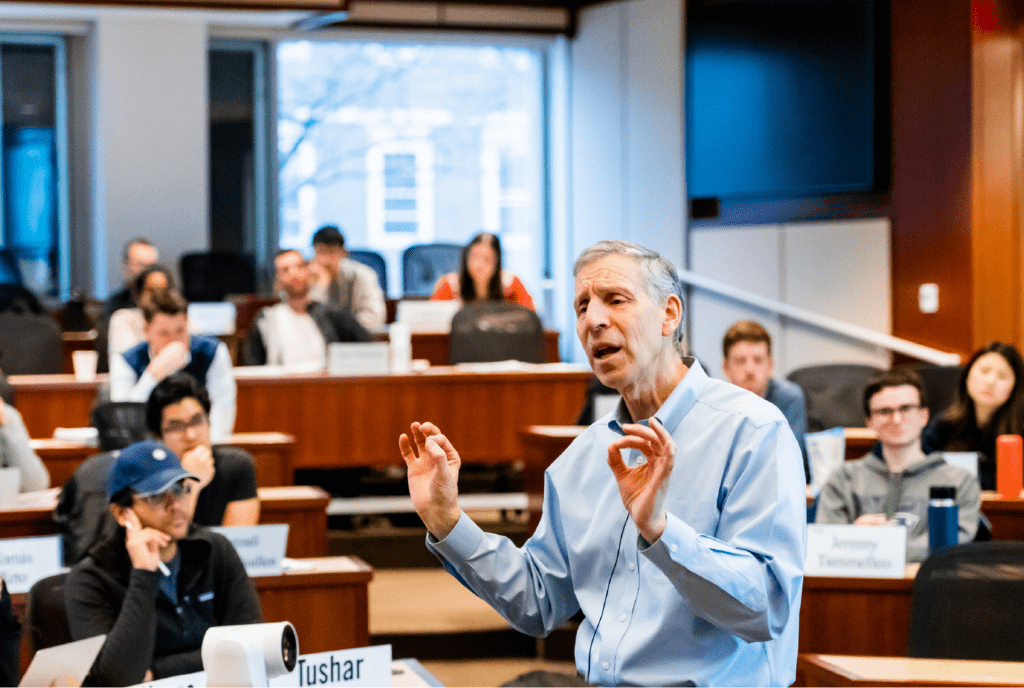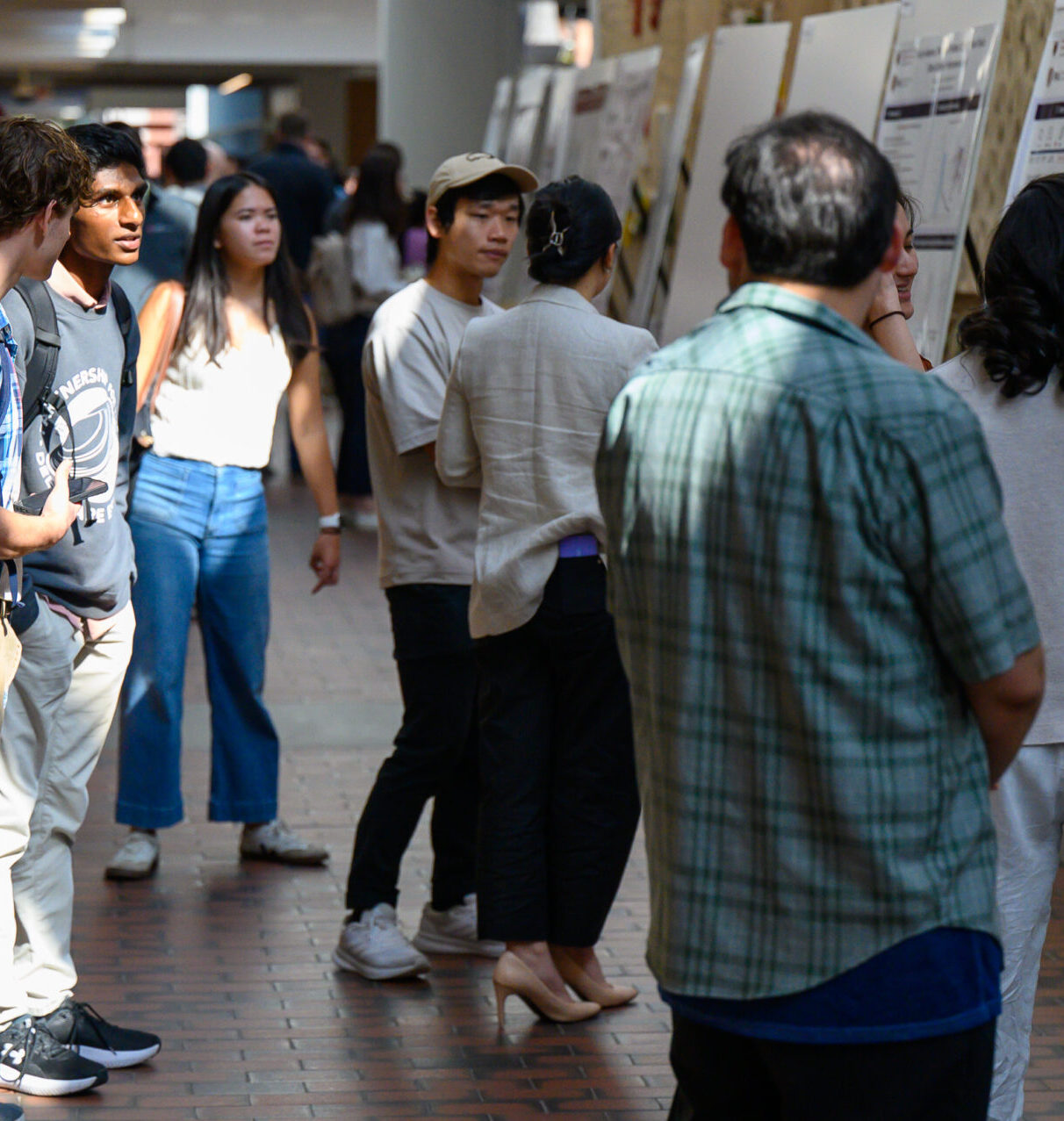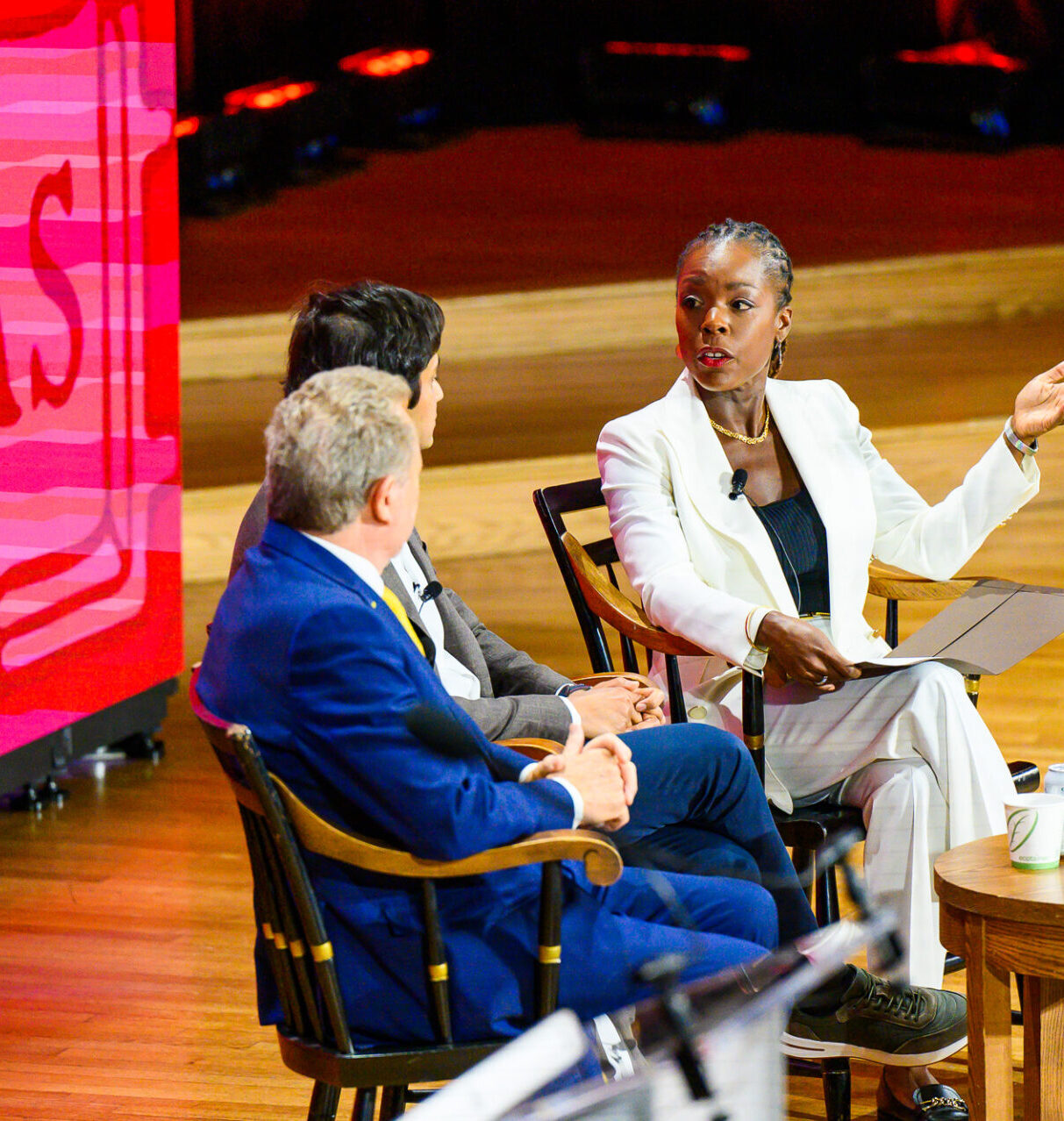Systems Thinking and Supply Chain Management: Climate, Poverty, and Human Rights
Instructor: Mark Fagan | Course ID: 213424 | Term: Spring
“I want each of you to draw me a diagram of Puerto Rico’s power grid and supply chain,” Professor Mark Fagan, Lecturer in Public Policy at Harvard Kennedy School, said to his class of eighty students. “You have twenty minutes!” Around the room, students began turning to their neighbors: “Would you like to work together?”
To succeed at this task, students had to methodically think through each step of Puerto Rico’s power supply chain. What is Puerto Rico’s main fuel source? How and where does it arrive on the island? Where are the power generation plants located, and how many are there? What constraints does the topography of the island present for power distribution?
The course, “Systems Thinking and Supply Chain Management: Climate, Poverty, and Human Rights,” trains future public servants, who will deliver public services or design policies, to design and operate effective supply chains.
“The delivery of quality public services with efficiency and equity requires the design and implementation of effective supply chain systems,” said Fagan, “but public decision makers aren’t always trained to problem-solve from a systems perspective.”
In our globalized world, supply chains guide the delivery of goods and services that touch every aspect of our lives. From switching on the lights, to delivering disaster emergency relief resources, supply chains dictate how, when, and where resources are delivered. As societies shift in order to address climate change challenges, thoughtful supply chains will be even more critical.

In particular, “the design of supply chains has a significant impact on climate, especially carbon emissions,” Fagan said. “Longer chains are often associated with greater carbon intensity.” By learning how to identify and evaluate inefficiencies in supply chains, students will be better prepared to tackle systems-related climate challenges through public policy and decision-making.
“In the course, we also look upstream in the supply chain to see the carbon that is embedded into the products and services we receive,” Fagan said. For example, when purchasing a new electric vehicle, it’s important to consider all of the energy, resources, and labor embodied in the final product. From the production of raw materials through mining and mineral extraction to the electrification of the auto-assembly plant and distribution of final products around the globe, each step of the supply chain has carbon costs.
Using exercises like the one requiring the students to map Puerto Rico’s energy supply chain, the class is designed to empower students to be the decision-makers and to confront systems challenges and tradeoffs. “I really enjoy seeing how they grapple with difficult issues, and ultimately how they reach agreements,” Fagan said.
“We all deal with supply chains, as either providers or recipients of products and services,” Fagan said. “Understanding the total carbon content embodied in those supply chains allows for more wholistically sustainable decision-making.”
“Having the students understand climate change challenges in a systems context will enable them to be more thoughtful and effective policymakers,” Fagan said. A better understanding of the sustainability, human rights, and poverty alleviation potential of supply chain design and operation “can help us all to live in a more sustainable and equitable world.”











